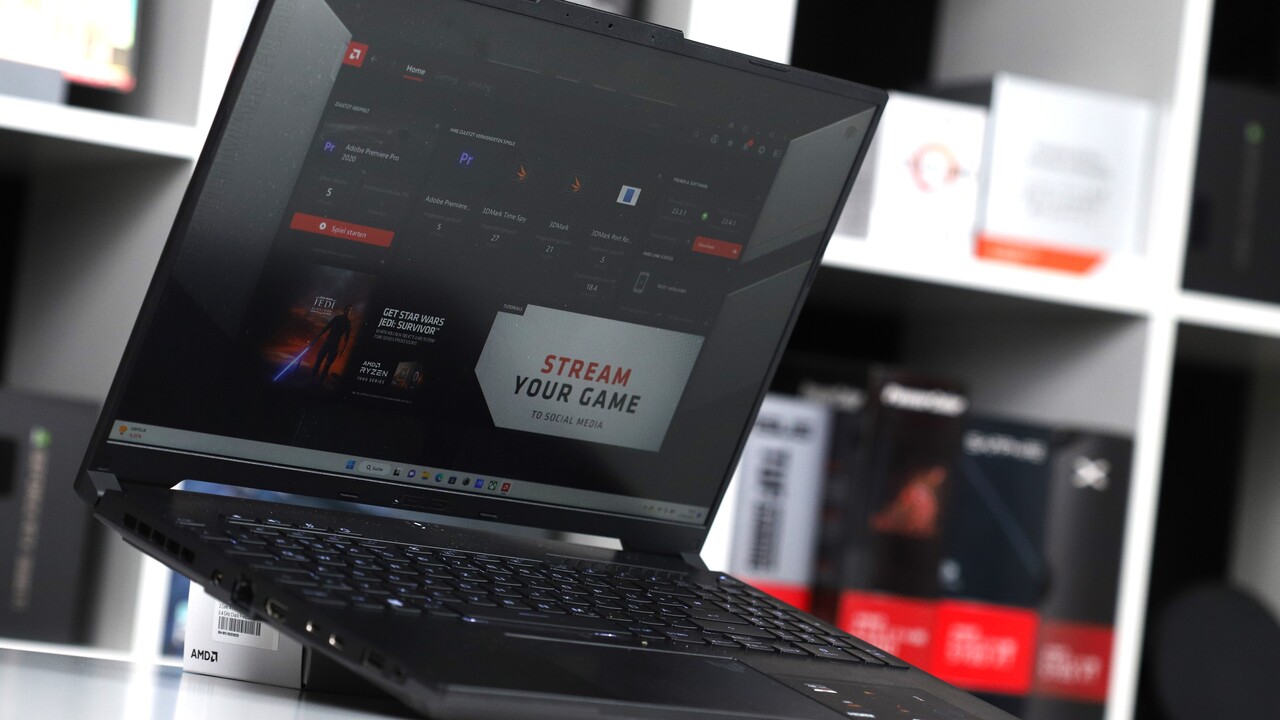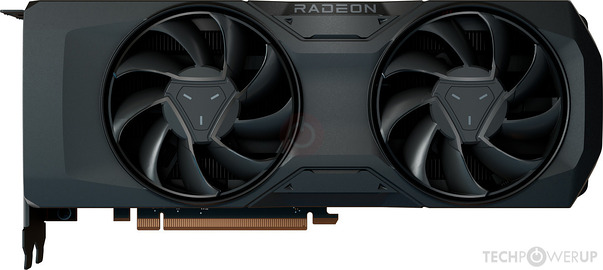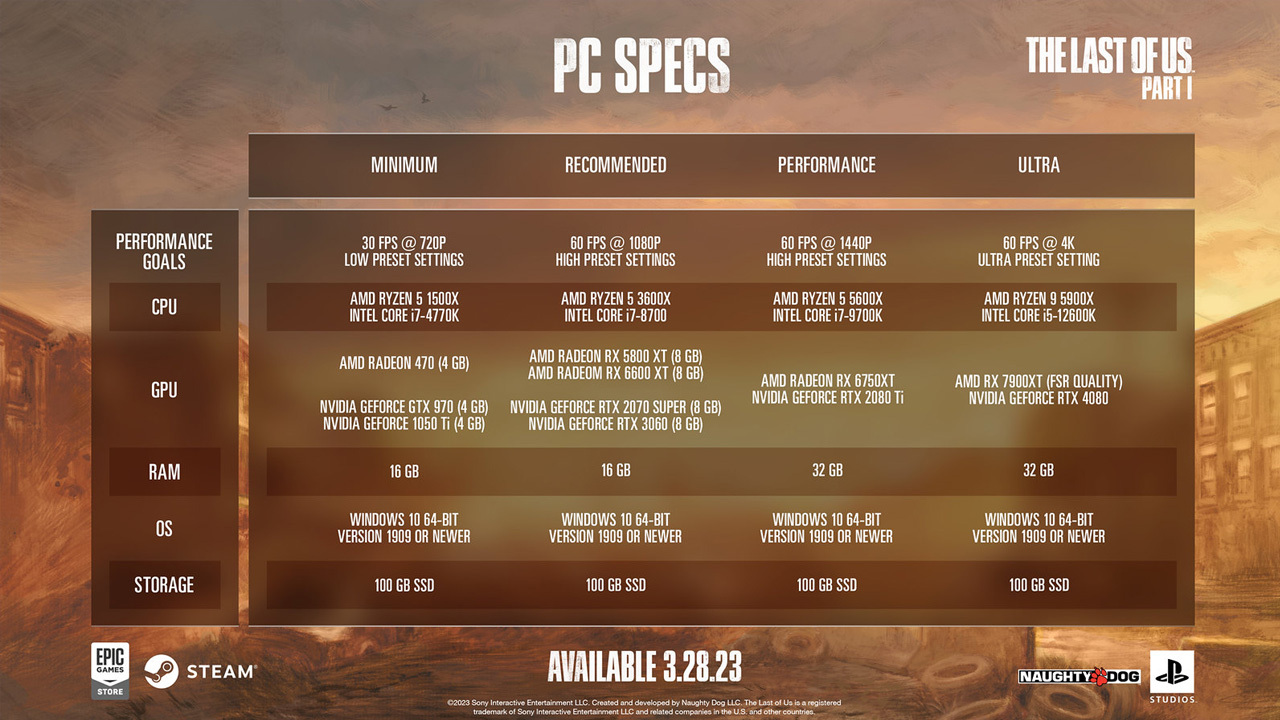-
Competitor rules
Please remember that any mention of competitors, hinting at competitors or offering to provide details of competitors will result in an account suspension. The full rules can be found under the 'Terms and Rules' link in the bottom right corner of your screen. Just don't mention competitors in any way, shape or form and you'll be OK.
You are using an out of date browser. It may not display this or other websites correctly.
You should upgrade or use an alternative browser.
You should upgrade or use an alternative browser.
It looks like the 'real' /affordable RDNA3 + next gen NV desktop launch won't launch until September. Thoughts?
- Thread starter g67575
- Start date
More options
Thread starter's postsI hope someone can get their hands on a Radeon PRO W7800 card and do a review, showing performance in games.
Would be interesting to see if it can get close to an RTX 4070 TI.
Don't they have totally different drivers.
Caporegime
- Joined
- 9 Nov 2009
- Posts
- 25,612
- Location
- Planet Earth
The RX7600S which uses a cut down 6NM die compared to a full TSMC 4N 5NM AD107:

 www.computerbase.de
www.computerbase.de
At similar power the RX7600S has similar rasterised performance but OFC worse RT performance. Surprised considering the RTX4060 mobile is on a much better process node.
Apparently the desktop RTX4060 might use the AD107(the RTX4060TI might use the AD106).

Asus TUF Gaming A16 mit Radeon RX 7600S im Test
Asus gegen den Rest der Welt: Mit dem TUF Gaming A16 samt Radeon RX 7600S stellt sich das bis dato einzige Notebook mit RDNA 3 dem Test.
At similar power the RX7600S has similar rasterised performance but OFC worse RT performance. Surprised considering the RTX4060 mobile is on a much better process node.
Apparently the desktop RTX4060 might use the AD107(the RTX4060TI might use the AD106).
Last edited:
Guess that additional RT performance¹ and those tensor sensors² do take to a lot of space.The RX7600S which uses a cut down 6NM die compared to a full TSMC 4N 5NM AD107:

Asus TUF Gaming A16 mit Radeon RX 7600S im Test
Asus gegen den Rest der Welt: Mit dem TUF Gaming A16 samt Radeon RX 7600S stellt sich das bis dato einzige Notebook mit RDNA 3 dem Test.www.computerbase.de
At similar power the RX7600S has similar rasterised performance but OFC worse RT performance. Surprised considering the RTX4060 mobile is on a much better process node.
Apparently the desktop RTX4060 might use the AD107(the RTX4060TI might use the AD106).
Navi 33 seems to be designed to be extra cheap to produce. Nothing wrong with as long as that is reflected in its price.
But for ¹, I actually believe that having most of that done at the shader level like AMD do makes more sense. Longer term, I really expect some fixed function units but not just for rays but also since of the setup as currently RT puts quiet a large load on the CPU.
For ²? Well, don't really think tensors are required for consumer loads but Nvidia have marketed then to death now so we shall see.
Rather than buying into Nvidia's marketing, I wish PCMR would start complaining that - like with Intel iGPUs on CPUs - they don't want to pay for things they don't use like they did with the old "I'd rather have more cores". Of course, that would force Nvidia to use separate chips for games and professional work.
Caporegime
- Joined
- 9 Nov 2009
- Posts
- 25,612
- Location
- Planet Earth
Guess that additional RT performance¹ and those tensor sensors² do take to a lot of space.
Navi 33 seems to be designed to be extra cheap to produce. Nothing wrong with as long as that is reflected in its price.
But for ¹, I actually believe that having most of that done at the shader level like AMD do makes more sense. Longer term, I really expect some fixed function units but not just for rays but also since of the setup as currently RT puts quiet a large load on the CPU.
For ²? Well, don't really think tensors are required for consumer loads but Nvidia have marketed then to death now so we shall see.
Rather than buying into Nvidia's marketing, I wish PCMR would start complaining that - like with Intel iGPUs on CPUs - they don't want to pay for things they don't use like they did with the old "I'd rather have more cores". Of course, that would force Nvidia to use separate chips for games and professional work.
If you read some of the bumpf about RDNA2 and the new consoles,it was about how AMD added RT to the existing RDNA1 designs with relatively few extra transistors. This definitely has some advantages for AMD for IGPs used in their APUs,and the ARM based SOCs which Samsung are designing too. The RDNA2 and RDNA3 IGPs look fantastic too:

AMD Radeon 780M RDNA3 iGPU has been tested, delivers smooth 1080p gaming - VideoCardz.com
AMD Radeon 780M tested ETA PRIME is a tech reviewer of all things limited by power. The YouTuber has shared many handheld gaming console, Mini-PC and laptop reviews over the past few years. With the arrival of powerful AMD integrated based on Vega, RDNA2 and RDNA3 graphics, these mobile products...
So it does seem RDNA3 is performing well,and it makes me wonder when Navi 31 performance is being negatively affected by the chiplet design. I wonder how it would have performed as a monolithic design made on the same TSCM 4N 5NM Nvidia is using??
Guess that additional RT performance¹ and those tensor sensors² do take to a lot of space.
Navi 33 seems to be designed to be extra cheap to produce. Nothing wrong with as long as that is reflected in its price.
But for ¹, I actually believe that having most of that done at the shader level like AMD do makes more sense. Longer term, I really expect some fixed function units but not just for rays but also since of the setup as currently RT puts quiet a large load on the CPU.
For ²? Well, don't really think tensors are required for consumer loads but Nvidia have marketed then to death now so we shall see.
Rather than buying into Nvidia's marketing, I wish PCMR would start complaining that - like with Intel iGPUs on CPUs - they don't want to pay for things they don't use like they did with the old "I'd rather have more cores". Of course, that would force Nvidia to use separate chips for games and professional work.
It would have been cool if instead of sticking RT cores on GPUs Nvidia stuck them on an add-on card like physx back in the day. They'd be able to dedicate the entire GPU to raster and dedicate even more RT cores to the add on card
Those were the GPUs for 4k 60 , seems normal.oof.
They're recommending a RTX 3090 /rx 6950 XT to play this game at 4K 60 FPS:

For some reason, a Ryzen 7700X is deemed insufficient to play smoothly at 4K Ultra
Dunno why people think you can do with less
Techpowerup's rumoured spec is up for the RX 7800 XT, which will apparently be based on the Navi32 GPU die:

 www.techpowerup.com
www.techpowerup.com
It looks okay, seems like it will perform similarly to the top Navi21 GPUs.
And best the RTX 3080 and RTX 4070.
I think it would be a shame if there's no more consumer Navi31 GPUs released...

AMD Radeon RX 7800 XT Specs
AMD Navi 32, 2430 MHz, 3840 Cores, 240 TMUs, 96 ROPs, 16384 MB GDDR6, 2438 MHz, 256 bit
It looks okay, seems like it will perform similarly to the top Navi21 GPUs.
And best the RTX 3080 and RTX 4070.
I think it would be a shame if there's no more consumer Navi31 GPUs released...
Last edited:
Yeah, true. The Last of Us requirements are even steeper, the heaviest I've seen in any PC game:Those were the GPUs for 4k 60 , seems normal.

But a less silly CPU recommendation though.
Last edited:
Caporegime
- Joined
- 18 Oct 2002
- Posts
- 31,181
Last edited:
Soldato
- Joined
- 23 Jun 2004
- Posts
- 4,902
- Location
- Blackburn
Yeah, true. The Last of Us requirements are even steeper, the heaviest I've seen in any PC game:

But a less silly CPU recommendation though.
It also recommends an RX 5800XT....
Caporegime
- Joined
- 9 Nov 2009
- Posts
- 25,612
- Location
- Planet Earth
It appears the full Navi 33 is being called the RX7600 non-XT and will be an 8GB VRAM card:

 www.youtube.com
www.youtube.com
So I wonder if the RX7600XT might be reserved for a model with more VRAM? I hope this is under $300/£300,because this looks more like an overclocked RX6650 8GB with some RDNA3 improvements,so probably is no better than an RX6700 10GB/RX6700XT 12GB but with less VRAM.

RX 7600 Launch Leak, Intel’s Apocalyptic Earnings, Zen 5 Recap, AMD Strix vs MTL | April Loose Ends
I leak new info on Navi 33 RX 7600, discuss Intel Q1 2023 earnings, and take Zen 5 Q&A
